Clematis "Rouge cardinal": description, pruning group, cultivation
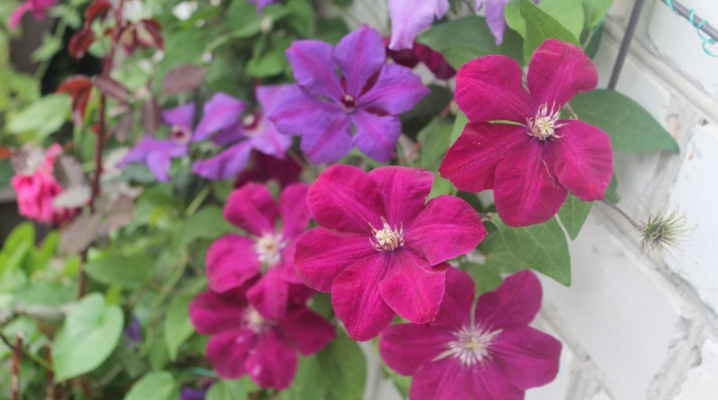
The most luxurious decoration of any garden plot is the enchanting clematis. The ornamental plant is presented in various varieties, but Rouge Cardinal, in which flowers are distinguished by bright shades, is especially popular. This variety of clematis is undemanding to care for, but in order to properly grow a gorgeous plant at home, you need to know the features of its planting and subsequent care.
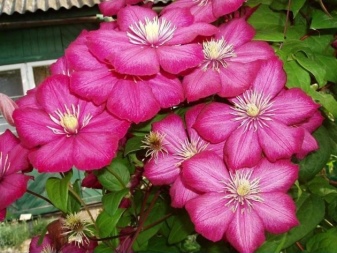
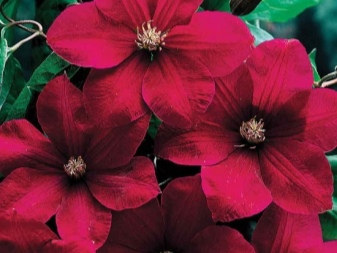

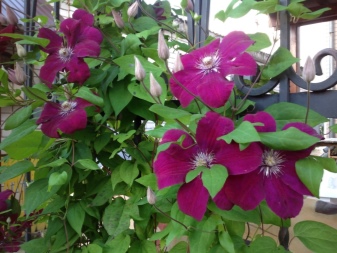
Description
Clematis "Rouge Cardinal" can rightfully be considered the king of lianas, it is easy to care for and thanks to its unusual flowers of various colors and shapes is able to give a chic look to landscape design. This variety is often used to decorate the walls of houses, fences, gazebos and pergolas. Rouge Cardinal was bred by breeders in 1968 by crossing varieties such as Pourpre Mat and Ville de Lyon. He received the best qualities from his "parents" and became the most any plant among gardeners. Large-flowered clematis differs from other varieties in the following characteristics:
- the height of the bush is from 2 to 4 m (it depends on the conditions of care);
- red-purple color of flowers, the diameter of which is up to 16 cm;
- flowering period - all summer and early autumn;
- a strong clipping group is the third.
Young shoots of the plant have a characteristic light green tint. The leaves of the "Rouge cardinal" are trifoliate (one leaf consists of several small dark green leaves), their size is medium. The strong root system of the plant goes deep into the soil. The flowers that usually appear on young shoots deserve special attention in clematis. The flowering period is a little late (lasts from the end of June to September), at this time the decorative liana is covered with many large velvety flowers of a dark purple color.
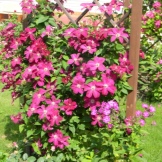
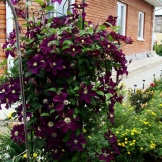

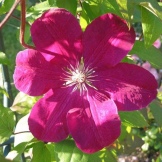
This variety has increased tenacity, the plant can "cling" to any object, fix on it and, continuing its growth, stretch upward. If you plant "Rouge Cardinal" next to a tree, then throughout the season it will completely encircle it. The main feature of the plant is that it can be grown in containers. Thereby it is possible to originally decorate not only the garden plot, but also the balcony or loggia in the apartment.
In addition, this variety is winter-hardy - before wintering, in order to protect it from winds and snow drifts, it is enough to cover the plant with buckets or spanbond.
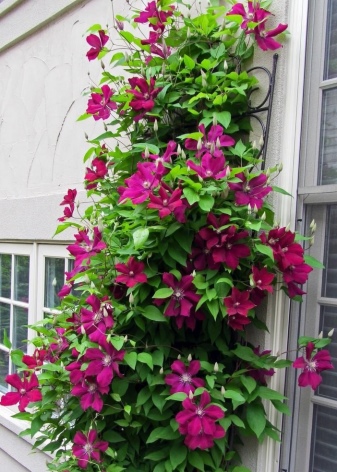
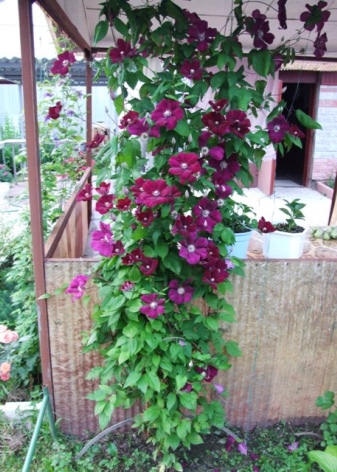
Landing
Before planting clematis "Rouge cardinal", you should choose the right site and prepare the planting hole. The plant is very fond of light, but feels great both in areas illuminated by the sun and in partial shade. Wherein it is not recommended to plant it under trees, it is best to choose a place where there will be sun for half the day and shade for half. Fertile soil is considered a suitable soil for planting clematis; saline and heavy soils are contraindicated for the plant.
If acidic soil prevails on the site, then its before planting a flower, it must be neutralized.

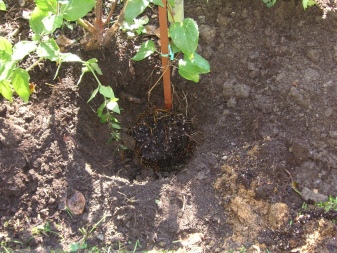
After the issue with the choice of the site is resolved, you should go to the flower shop and purchase a seedling, which can be sold both in a pot with fertilized soil or without it. The last purchase option is considered not the best, since it will be difficult for a seedling with a bare root system to take root.
Some gardeners also grow the plant from seed. This is quite painstaking work, but it is worth it, since as a result, a powerful and beautiful flower can be grown. Sowing dates "Rouge Cardinal" depend on the size of the seed: large grains are strong, they can be sown in late autumn, small ones will not withstand severe cold weather, so it is best to sow them in spring (from March to April). Seeds must be sown in open ground, and a small greenhouse should be set up to speed up sprouting.
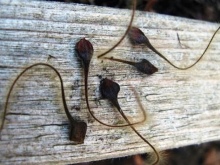
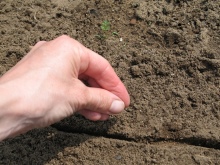
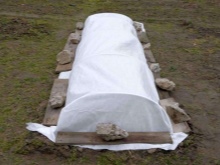
Planting clematis "Rouge cardinal" from seedlings involves several steps.
- First, you need to dig a planting hole measuring 60x60x60 cm. Its lower half is filled with a special substrate. To do this, the top layer of the earth is mixed with humus and complex fertilizer (200 g).
- Then the seedling is carefully placed in the prepared soil, compacted and watered. The top of the planting hole should remain open and will have to be gradually filled up as the plant grows. The neck of the bush should remain 10-12 cm below the ground. Thus, the development of lateral roots is activated.
- Planting ends with mulching. It is usually carried out 7-10 days after planting the seedling. Thanks to the mulch, the stalk will be reliably protected from wind and heat, this will also help maintain an optimal temperature and humidity regime in the soil.
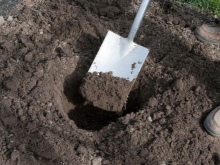
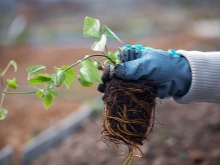
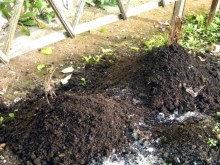
In the event that the plant was grown in a seed cup, then it is planted in a permanent place, adhering to several rules.
- First of all, you should inspect the roots, and if they are dry, then the glass should be soaked in cold water.
- Then the holes are prepared, from which part of the fertile soil is taken out. A small mound is formed at the bottom of the hole, it must be tamped with your hands. The seedling should be located on the very hill of the hill. It is carefully removed from the glass, so as not to damage the integrity of the earthen coma, and placed on the bottom of the hole.
- After that, the root system is covered with a previously extracted layer of fertile soil and sprinkled with the root collar, part of the stem. At the end of planting, the seedling is well watered, the water should be at room temperature.
When planting several flowers on an area it is important to maintain a distance of 1.5 m between them. Throughout the summer, the development and growth of the plant should be monitored. If there is a minimal increase, and clematis looks depressed, then this indicates that the place did not suit him. It is possible to solve this problem by transplanting a plant to another site, this must be done next spring.
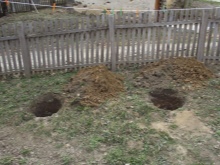
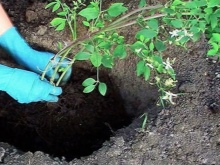

Follow-up care
Clematis "Rouge cardinal", although it is considered an undemanding plant to care for, it still needs to be provided with the proper conditions for normal growth and development. Liana needs to be watered often because it loves moisture. Since the roots are located deep in the ground, the soil must be loosened before watering. This will facilitate the penetration of moisture into the depths of the soil. In addition, the area where the flower grows, should be periodically weeded to remove weeds.
Timely fertilization is also considered important in the care of the Rouge Cardinal variety. To make the plant happy with lush flowers, top dressing is performed 2 times a month. As for the type of feeding, it depends on the season. So, in the spring, when shoots grow, the plant requires more nitrogen. In this case, it is fed with mullein, bird droppings or ammonium nitrate. After the appearance of the first buds, in addition to organic matter, liana must be provided with a mineral complex.
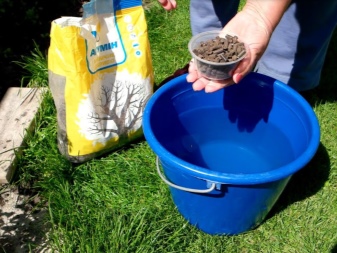
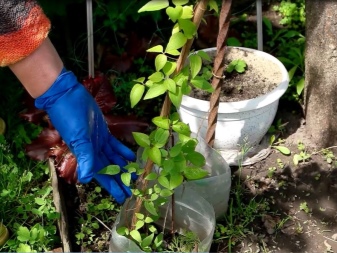
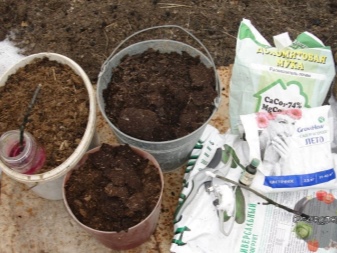
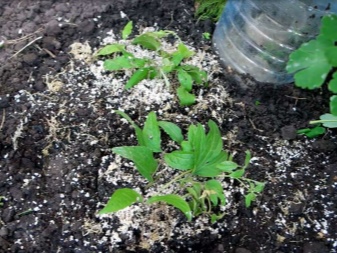
In the fall, when the flower needs to be prepared for wintering, the soil under the clematis is dug up and potassium sulfate is added to it. After that, the earth is watered abundantly, and as it dries up, loosening is performed.
It is also necessary to clear the site of weeds before winter, and mulch the soil near the vine with sawdust or peat.
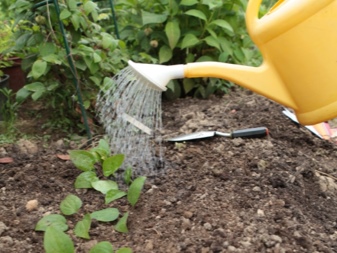
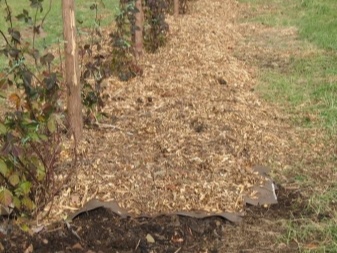
Disease and pest control
Despite the fact that the Rouge Cardinal variety is highly resistant to diseases, it requires preventive measures against the appearance of rust, powdery mildew and damage by putrefactive bacteria. The most common plant diseases include a number of ailments.
- Fusarium. It is manifested by the wilting of the plant due to the influence of fungi "living" in the ground. The root system of the flower is affected: bacteria form into a large mycelium and clog the roots. After this, the vine begins to lose freshness, quickly fades and dries up. To prevent this disease, it is necessary to carry out preventive actions using iron or copper sulfate.
- Wilt. It is a fungal infection that affects not only the root system, but also the shoots. The causative agent of the disease is in the ground, it penetrates into the plant stem through the root system and causes blockage of internal vessels, disrupting their permeability. As a result, nutrients are not supplied upstairs, and the flower begins to dry out.
You can reduce the likelihood of this disease by watering the soil with copper sulfate, a solution of potassium permanganate and Bordeaux liquid.
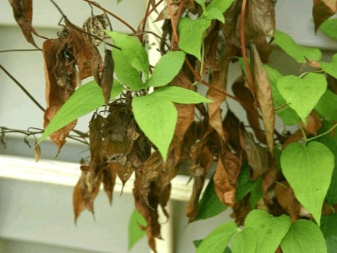
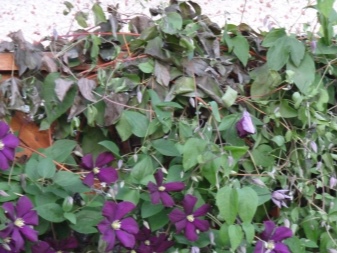
Clematis is most often populated by several well-known pests.
- Spider mite. It is a tiny red insect that usually lives on the backs of a leaf and weaves a web. It feeds on the sap of the plant, so the leaves begin to turn yellow quickly and the buds wither. It is possible to save a flower from a pest by treating it using insecticides such as Inta-Vir, Karbofos, Aktellik.
- Fly. This is a tiny dipteran insect, its larvae feed on liana leaves, creating a whole system of passages in them. Due to the violation of the integrity of the leaf plates, the leaves crumble. You can get rid of flies both by prophylactic spraying and using traps in the form of sticky tape.
- Thrips. These insects live in the soil, but in hot weather in search of food they climb the foliage of clematis and feed on their juice. This is evidenced by the appearance of spots on the foliage and the yellowing of the flower. Ornamental crops can be saved by spraying using special insecticides.
- Nematodes. Insects in the form of worms live in the soil and damage the root system of the vine. Their appearance can be seen by the brown swellings on the roots, they cause the process of decay, and the plant takes on a drooping appearance, stops its growth and withers. In addition, there are leaf nematodes, whose vital activity takes place on the foliage of clematis. The massive settlement of these insects leads to drying and leaf fall. "Dimethoat" is considered a good tool in pest control.
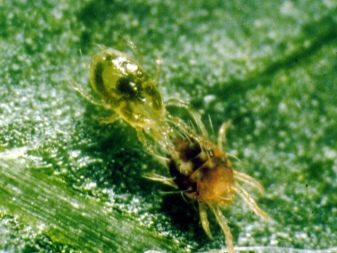
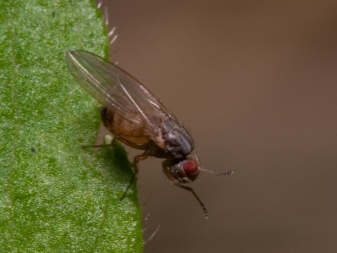
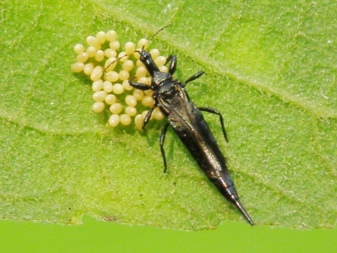

Trimming group
Caring for Rouge Cardinal clematis involves constant pruning, which should be given special attention in the summer by pruning broken and dried shoots. Thanks to this, the height of the shrub is regulated. If you pinch the main stem, you can stop its growth and activate the growth of lateral shoots. Pruning the plant in the fall also plays a huge role. All clematis, according to the method of pruning in the fall, are divided into three groups, the Rouge Cardinal variety belongs to the third group.
The peculiarity of pruning this group is that in autumn the shoots are cut off completely, leaving only small stems with a pair of buds 20 cm long. Due to this, new shoots grow in spring, on which flowers bloom in mid-summer. Moreover, if clematis is cut in winter, then they will be more "tenacious", and they do not need to be insulated.
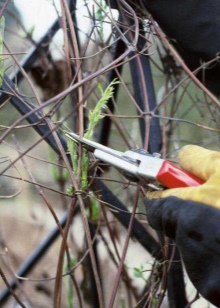
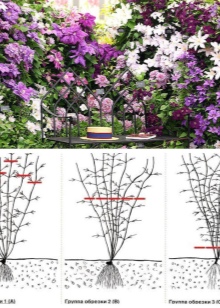
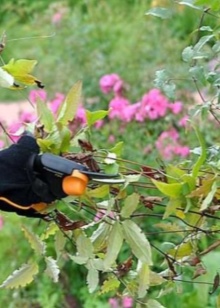
Preparing for winter
Clematis "Rouge Cardinal", although it is considered winter-hardy, after trimming the shoots, it still needs to be covered with earth and covered with dry foliage... Additionally, you can also lay pine branches on top. If there is no organic shelter at hand, then use agrofiber or colored film.Cut off stems and roots, as a rule, are covered before the onset of the first frost, and in harsh climatic zones, the flower must also be sprinkled with snow. The shelter is removed in spring, when the snow melts completely.
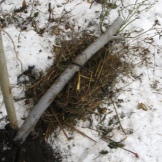
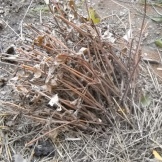
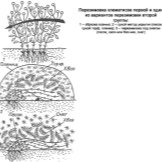
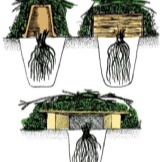
How to reproduce?
This variety of clematis is usually propagated vegetatively. Some gardeners manage to propagate Rouge Cardinal from seed, but new plants then lose the characteristics of the mother culture. To propagate a shrub at home, you can choose one of the methods discussed below.
- Division of the bush. This type of reproduction, as a rule, is used to rejuvenate the vines, since with age it begins to lose its decorative effect and blooms poorly. The bush is usually divided in the spring, before the budding begins, or in the fall, when it has faded. For division, shrubs from 5 to 8 years old should be selected, its entire ground part is cut off, only short shoots with vegetative buds remain at the base. The bush must be dug out, the roots must be separated from the ground and divided into several divisions. Adequate roots and a shoot with buds should be left on each part.
- Layers. In this way, clematis is propagated in the summer, sprinkling the side stem with earth and bringing out the top. Already in the second year, the branch will grow overgrown with roots, and it will be possible to separate it from the mother plant. A young shoot with roots must be planted in a new permanent place.
- Cuttings. To do this, in the summer, cuttings 10-12 cm long should be cut from the vines, cleaned of foliage and placed in a container with water. After that, the twigs should be placed in a moist peat-sandy substrate and covered with a plastic bottle on top.
As soon as roots appear on the cuttings, they are immediately transplanted to a permanent place.

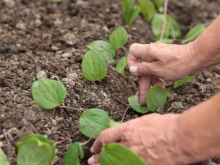
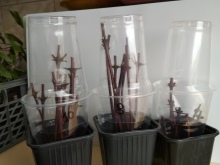
Examples in landscape design
Clematis "Rouge cardinal" is considered one of the most beautiful ornamental plants, which is often used in landscape design for vertical gardening of gazebos, balconies, pergolas, garden plot, fences, walls of houses and terraces.
This flower can easily grab onto a support and climb up trees. You can decorate with such a handsome man not only garden plots, but also loggias, balconies.


In the next video, you will see a description of the varieties and groups of clematis.







































































































The comment was sent successfully.